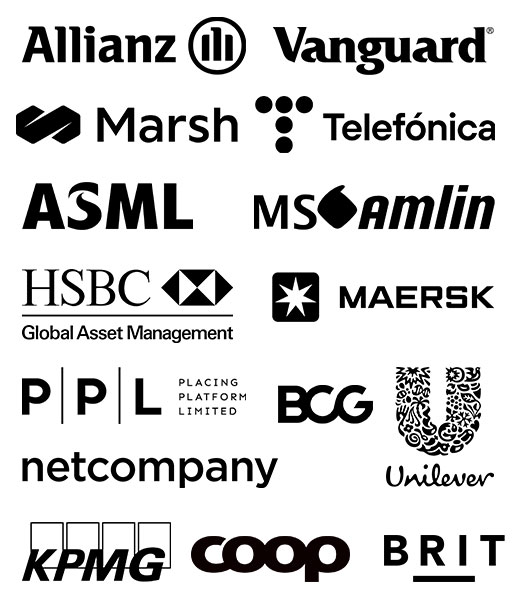5 critical gaps in the candidate journey, how to close them and deliver projects faster than ever.
Are you struggling to hire the top rated talent? Are your hiring processes simply falling short?
Although there is business outlook uncertainty, the vast majority of executives across Europe say they’re planning to accelerate their digital programmes. With business pressure increasing, CTO’s are looking to hire the highest rated candidates in 2023, and there is a leaning towards injecting expertise for an agile working contractual pattern.
No matter how big or how specialised the team you need, there are more than enough talented people out there. They’re just choosing to work elsewhere. If you’re seeing candidates drop-off, below-average applicants or high rates of churn, it’s time to get honest about why.
A lot of businesses fall into the same traps when trying to recruit new talent. They fail to give partners the information and attention they need to source high-quality candidates, and don’t dedicate enough time to training their own team of interviewers. It results in a bad experience for those in the talent pipeline, very few of whom make it through to the final stages.
That means critical transformation projects are derailed, going over deadline and budget. The additional business uncertainty it putting a squeeze on resources, and fixing hiring issues has never been more important.
Every other project on your roadmap is meticulously planned, staffed by experts, closely managed and routinely measured and iterated. Why not hiring?
After all, without the right people in place, the rest of those projects are at risk, too. Closing your talent gap is not as monumental a challenge as it might seem. There are five common mistakes that, properly addressed, could help dramatically improve and accelerate your hiring process. To stay ahead, you need to act on them now.
The impact of poor hiring processes.
Of course, getting the highest rated candidates into your talent pipeline is hard. But are your hiring processes causing unnecessary blockages further down?
Failing to pay enough attention to hiring does more harm than good, and pushes back business-critical work even further. Can you say with confidence that you’re not making one or more of these critical mistakes?
11,783 hiring process data points analysed
- 64% drop in average candidate interest if feedback is not delivered in 48 hours.
- 31% drop in average 1st to 2nd interview rate if candidate rates interviewer ‘poor’.
- 28% drop in average hiring rate if client communication is rated ‘poor’.
- 11% drop in average 1st to 2nd interview rate if candidate rates company vision ‘unclear’.
5 critical gaps in the candidate journey.
How do you usually hire for a role? The chances are that you’ll spend a lot of time mapping out the specific skillset and job title you’re looking for, and negotiating with the wider business to decide on an appropriate package. You probably spend less time thinking about what happens in between.
That’s an issue. The candidate journey through your hiring process is just as important as the customer journey through your product. The product itself might be brilliant – but it’ll fail without thoughtful, well-designed and user-focused CX. The same is true for your recruitment. Engaging candidates correctly and consistently from their very first interaction with your business – and throughout the hiring process – can significantly improve your stickiness.
Selling the package instead of the vision.
Most people move jobs for emotional reasons; they want
career development, or to work for a company that shares their values. Very few care about money and benefits most.
But it’s still how a lot of businesses sell their jobs – if they sell at all. Neglecting to share the vision is a huge mistake especially in tech roles. The highest rated developers, architects and project managers are in high demand. They can do their job anywhere. Why should they do it for you? A couple of extra days’ holiday and a pool table won’t cut it.
Using unqualified interviewers.
Poor interviewers forget that their job is not to find fault with potential hires. They ask pointless questions or worse, slip into Simon Cowell-style bully mode. It puts candidates off.
There’s no one right way to run interviews, but there are a lot of wrong ways. Does your hiring team have any skills in interviewing? Do they know how to conduct one properly, and are they thinking about the candidate perspective at all? If the answer to any of these is no, you can wave goodbye to your hiring plan.
Failing to prepare for interviews.
Be honest – how much time do you spend prepping for interviews? Do you have a clear idea of what questions are most important to ask, what a good answer to them is, and how to tease the best out of candidates?
Do you spend time reading their profile and CV, and tailoring the interview around them? Or do you scan it on the way to the meeting and wing the rest? Sending interviewers in without a solid, strategic approach to the process is the best way to disengage a candidate. It wastes your time and theirs.
Not engaging well with talent partners.
If you’re using a staffing agency to find candidates, you need to equip them to do the job well. Engage them properly and communicate regularly. Giving them a one-page overview of the job description and leaving them to it won’t work.
A lot of people are sceptical of external recruiters, and it’s not hard to understand why. But if that’s the case, don’t work with them. A good talent partner will be able to work autonomously, and to deliver great results – but it needs to be a two-way street. By managing them badly, you’re setting them (and yourself) up to fail.
Delaying feedback.
Nobody’s ever felt more engaged and excited about a position after a company’s taken weeks to get back to them. The markets are busy: treating talent mean will not keep them keen.
There’s no good reason for stalling, or being overcautious about giving feedback. Make candidates wait, and they’ll just move on to your competitors. It’s not a risk you can afford to take.
How to find the top 2% of talent.
Knowing what’s wrong isn’t the same as knowing how to fix it. The right approach will depend on your business and begins with you thinking critically about how good your hiring processes really are. You might not like the answers.
You need to ask yourself if you’re taking hiring seriously enough – because if you aren’t your business is going to suffer. You wouldn’t take a half-baked approach to developing software, or building a product roadmap, and you shouldn’t for creating a hiring plan, either.
Thankfully, there’s some low-hanging fruit you can implement now to smooth out the candidate experience, and get high-value talent onboarded faster.
Sell the vision.
Treat candidates like clients and sell. The majority of people want to know where they’re going and the part they can play.
Tech talent particularly likes engaging with senior team members to understand the scope and detail of the work – so let them do that before you start testing their capability. And if the reason you’re hiring them is to drive towards future goals, ask questions about how they’d tackle them. Bin irrelevant, scenario-based questions about things they’ve done in the past.
Train interviewers.
Your current employees are tech specialists, not talent specialists. But if you’re putting your potential next hires in front of them, they need to be both.
If you’ve never listened to how well your team performs in interviews or challenged them on their technique, now’s the time to start. Make sure they’re selling the business and not putting potential candidates off. You should also set up exit polls to get feedback from candidates on how they found the process (whether you liked them or not). Take the same data-driven approach to iterate your hiring process as you would to any other form of user testing.
Prepare thoroughly.
Don’t skim CVs as you make a cuppa on the way to the interview. Build a proper framework. And make sure you’re asking questions you really want to know the answer to – not just the ones you always ask.
Most importantly, check you’re getting the balance right between testing competency and encouraging engagement with the role. Spend too long on one instead of the other, and you’ll end up with a candidate who’s perfectly capable of doing the job, but doesn’t want it.
Get in sync with talent partners.
Talent partners are often candidates’ first point of contact with your business. First impressions count, so make sure partners are set up to give a good one.
That starts with you. Share as much information and context on the role as you can at the outset. Then keep sharing. Don’t treat it as a ‘one and done’ relationship. Work closely with them, share feedback, give clear guidelines on what good and bad look like, and communicate clearly and often. If you’re running daily scrums with every other team, run them with your talent team, too.
Give rapid feedback.
Transformation moves fast. So should you.
Want to know more about staffing your projects, and getting them delivered faster than ever? Start hiring.










